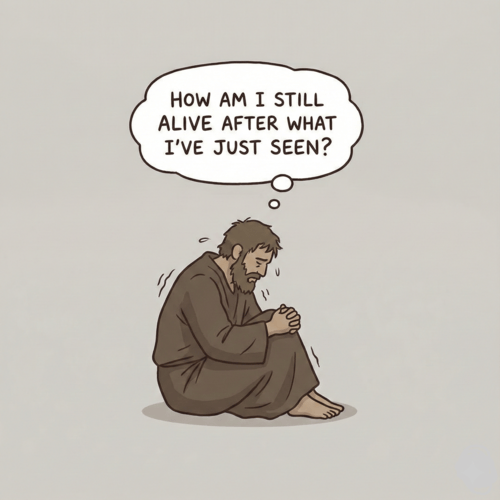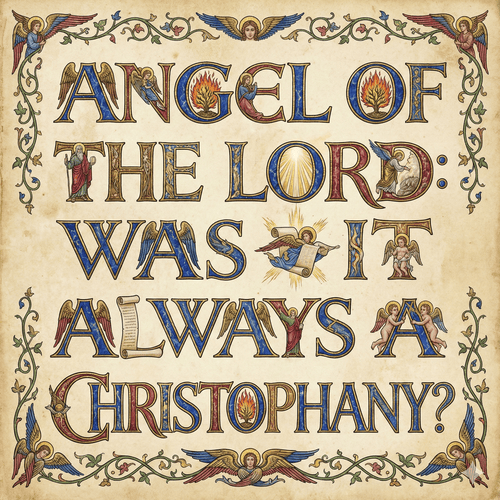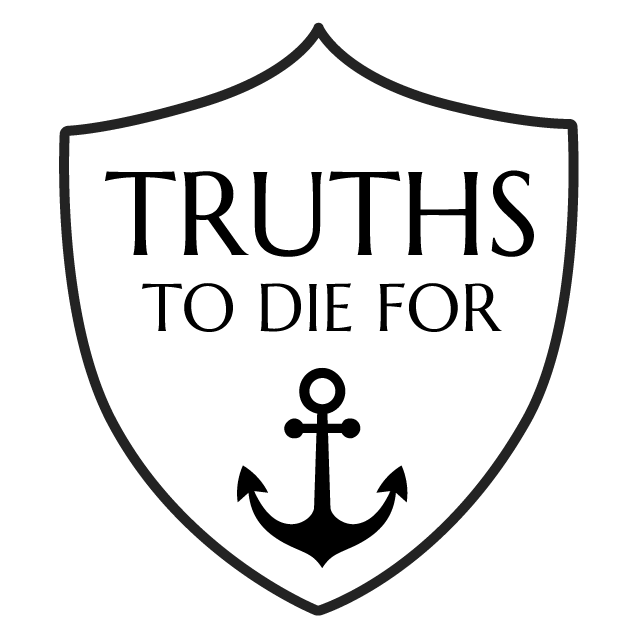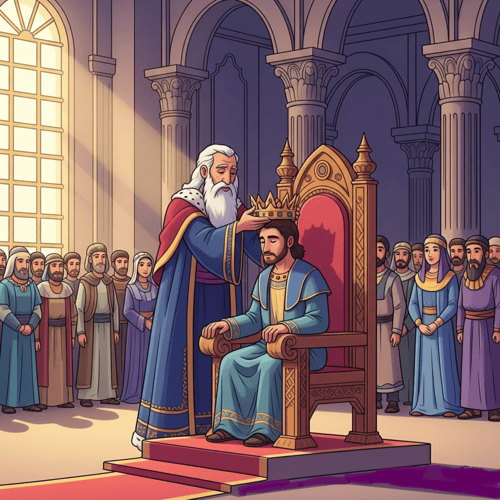22 or 42: How Old Was Ahaziah When He Became King?
We occasionally encounter Bible passages that seem to contradict each other: King Ahaziah’s age at his coronation is one such puzzle. In 2 Kings 8:26, we read “Ahaziah was 22 years old when he became king,” while 2 Chronicles 22:2 states he was “42 years old when he became king.” This 20-year discrepancy has puzzled scholars for centuries. Careful investigation, however, reveals a compelling solution that actually strengthens our confidence in Scripture’s reliability.
THE CASE FOR 22: MANUSCRIPT AND INTERNAL EVIDENCE
The most compelling explanation for this discrepancy is a copying error in the Chronicles manuscript tradition. Hebrew numbers were particularly susceptible to scribal mistakes because they were represented by letters that could easily be confused.
In Hebrew, the number 22 would be written as כב (kaf-bet), while 42 would be written as מב (mem-bet). The letters kaf (כ) and mem (מ) are similar enough that a tired scribe could easily mistake one for the other, especially in ancient manuscripts where letter forms were less standardised.
But manuscript evidence alone isn’t sufficient. We need internal biblical evidence, and here the case becomes overwhelming.
CHRONOLOGICAL HARMONY POINTS TO 22
When we examine the broader chronological framework of the Judean monarchy, age 22 creates perfect harmony while age 42 produces impossible contradictions.
Ahaziah’s father, Jehoram, became king at age 32 and reigned for eight years before dying at age 40 (2 Kings 8:17). If Ahaziah was 42 when he became king, he would have been born when his father was negative-2 years old—a biological impossibility. Even if we assume Jehoram lived slightly longer than 40, Ahaziah would still be nearly the same age as his father.
Consider also Ahaziah’s mother, Athaliah, daughter of Ahab and Jezebel. For the royal chronologies to work, Athaliah would have been approximately 60 years old when giving birth to Ahaziah if he was 42 at his accession. While not impossible, this stretches credibility, especially given the high infant mortality rates in the ancient world.
In contrast, age 22 creates seamless chronological flow. Jehoram would have been 18 when Ahaziah was born—entirely reasonable for a royal marriage. The timeline aligns perfectly with the broader narrative of the Omri dynasty’s collapse.
THE OMRI CONNECTION CONFIRMS OUR ANSWER
The Books of Kings repeatedly emphasise the connection between Ahaziah’s reign and the fall of the house of Omri. This political context makes perfect sense if Ahaziah was a young man (22) who could be easily influenced by his mother’s family connections to the northern kingdom.
If Ahaziah was 42—a mature, experienced ruler—his brief reign and the circumstances of his death become harder to explain within the narrative framework that the author of Kings has constructed.
WHY ALTERNATIVE EXPLANATIONS FALL SHORT
Some scholars have proposed co-regency theories, suggesting Ahaziah ruled jointly with his father before becoming sole king. While co-regencies did occur in ancient Israel and Judah, the explanation doesn’t address the specific textual problem. Both passages describe his age “when he became king,” not when he began co-ruling.
Others have suggested different dating systems might account for the discrepancy. However, no known ancient chronological system would produce a 20-year difference for the same event. The gap is too large to attribute to different calendar calculations.
THE THEOLOGICAL SIGNIFICANCE
This textual problem actually demonstrates the sophisticated nature of biblical transmission. Ancient scribes were generally careful copyists, but they were human. The fact that such copying errors are relatively rare and usually identifiable through textual criticism shows the overall reliability of the transmission process.
Moreover, this issue touches no fundamental doctrine. Whether Ahaziah was 22 or 42 doesn’t affect our understanding of salvation, the nature of God, or any essential Christian teaching. The discrepancy involves a minor historical detail that careful scholarship can resolve.
CONCLUSION: HOW OLD WAS AHAZIAH WHEN HE BECAME KING?
The evidence strongly supports the 2 Kings reading of 22 years old. The manuscript evidence, chronological harmony, and narrative context all point in this direction. The 42 in Chronicles appears to be a copying error—the kind of minor scribal mistake that occurred occasionally during the long process of manuscript transmission.
This conclusion doesn’t weaken our confidence in Scripture; it strengthens it. The fact we can identify and correct such errors through careful study demonstrates both the general reliability of biblical transmission and the value of rigorous scholarship in service of God’s Word.
Rather than being embarrassed by such textual problems, we see them as opportunities to demonstrate that faith and scholarship work together. The Bible can withstand honest investigation because it is, ultimately, God’s reliable Word preserved through human hands.
HOW OLD WAS AHAZIAH WHEN HE BECAME KING? RELATED FAQS
How do Old Testament scholars react to this discrepancy in Ahaziah’s age? Edward J Young, the renowned Old Testament scholar at Westminster Theological Seminary, argued the Chronicles reading of “42” was likely a textual corruption that occurred during manuscript transmission. In his Introduction to the Old Testament, Young emphasised such numerical discrepancies don’t affect the doctrine of inerrancy since they concern copying errors rather than original authorial intent. He noted the overwhelming internal evidence supports the Kings reading of 22 years old.
- How do other ancient versions handle this discrepancy? The Septuagint (Greek translation) of Chronicles reads “20 years old” rather than 42, suggesting some ancient translators recognised the problem and attempted correction. The Syriac Peshitta follows the Hebrew text in both places, maintaining the discrepancy. Most significantly, Josephus, the first-century Jewish historian, records Ahaziah’s age as 22, indicating this was the commonly accepted reading in his time.
- Did the original Hebrew scribes leave any clues about this problem? Some Hebrew manuscripts contain marginal notes (called masorah) that indicate scribal awareness of textual difficulties, though specific notes about this discrepancy are rare. The careful scribal tradition of noting unusual readings suggests ancient copyists were generally aware when texts seemed problematic. The absence of widespread marginal commentary on this passage may indicate the error occurred relatively late in the transmission process.
How does this issue relate to the broader Chronicler’s historical method? The Chronicler (author of 1-2 Chronicles) often supplemented the Kings account with additional genealogical and numerical details, sometimes drawing from sources no longer available to us. Reformed scholars like William Dumbrell have noted the Chronicler’s editorial approach makes his text potentially more susceptible to numerical errors during transmission. This doesn’t reflect on the Chronicler’s accuracy but rather on the complexity of preserving detailed numerical data across centuries.
- What do archaeological discoveries tell us about royal ages in ancient Israel? Archaeological evidence from the ancient Near East suggests kings typically began ruling in their late teens to early twenties, especially when succeeding their fathers. The Tel Dan inscription and other royal annals from surrounding cultures support the pattern of younger succession ages. A 42-year-old Ahaziah would be unusually old for a first-time king in this historical context. This further supports the reading he was 22 years old.
- How do pastors handle this discrepancy when teaching? Pastors address this issue directly rather than ignoring it, using it as a teaching opportunity about textual criticism and biblical authority. John Murray and other Westminster theologians emphasised honest acknowledgment of copying errors actually strengthens congregational confidence in Scripture’s reliability. The discrepancy can illustrate how God preserved His Word through human agents while maintaining the distinction between inspiration and preservation.
Are there other similar numerical discrepancies in the Old Testament? Yes, several other passages contain numerical variations between parallel accounts, such as the ages of various kings in Kings versus Chronicles, and army sizes in Samuel versus Chronicles. Reformed scholars like Gleason Archer have catalogued these differences, demonstrating that most result from copying errors involving Hebrew numerical notation. These patterns actually support the textual transmission explanation for the Ahaziah discrepancy rather than undermining it.
HOW OLD WAS AHAZIAH WHEN HE BECAME KING? OUR RELATED POSTS
- King Ahaziah’s Death: Are the Bible Accounts Contradictory?
- Bible ‘Contradictions’: Not Quite Hurdles to Faith
- Undesigned Coincidences: Subtle Details That Validate Bible Truth
- Interlocking in the Gospels: Powerful Evidence for Bible Authenticity
- Unintended Similarities in the Bible: Hidden Clues to Gospel Authenticity
Editor's Pick

The Throne-Room Vision: Who Did Isaiah See?
The scene is unforgettable: Isaiah stands in the temple, and suddenly the veil between heaven and earth tears open. He [...]

The Angel of the Lord: Can We Be Certain It Was Christ All Along?
Throughout the Old Testament, a mysterious figure appears: the Angel of the LORD. He speaks as God, bears God’s name, [...]
SUPPORT US:
Feel the Holy Spirit's gentle nudge to partner with us?
Donate Online:
Account Name: TRUTHS TO DIE FOR FOUNDATION
Account Number: 10243565459
Bank IFSC: IDFB0043391
Bank Name: IDFC FIRST BANK






